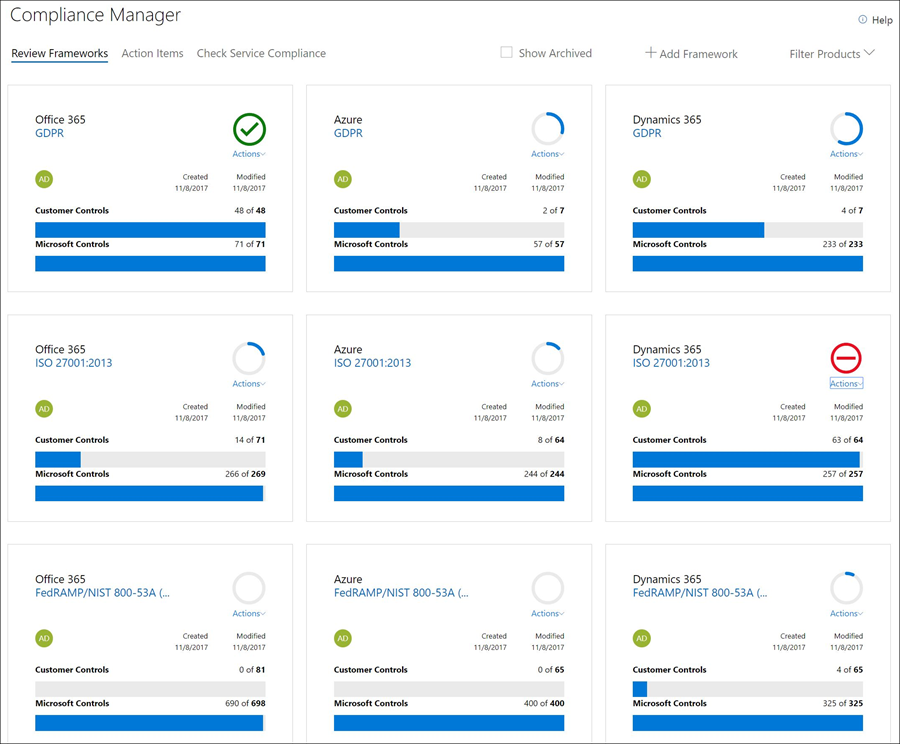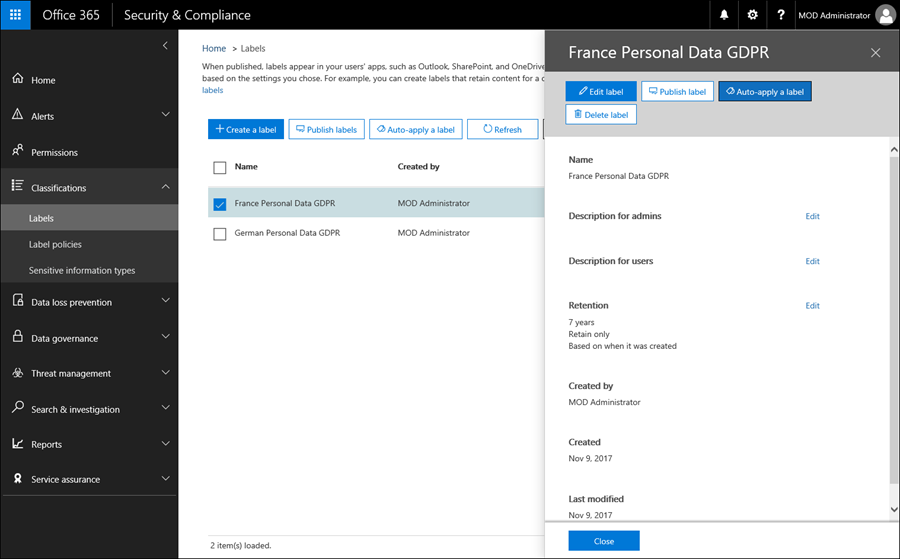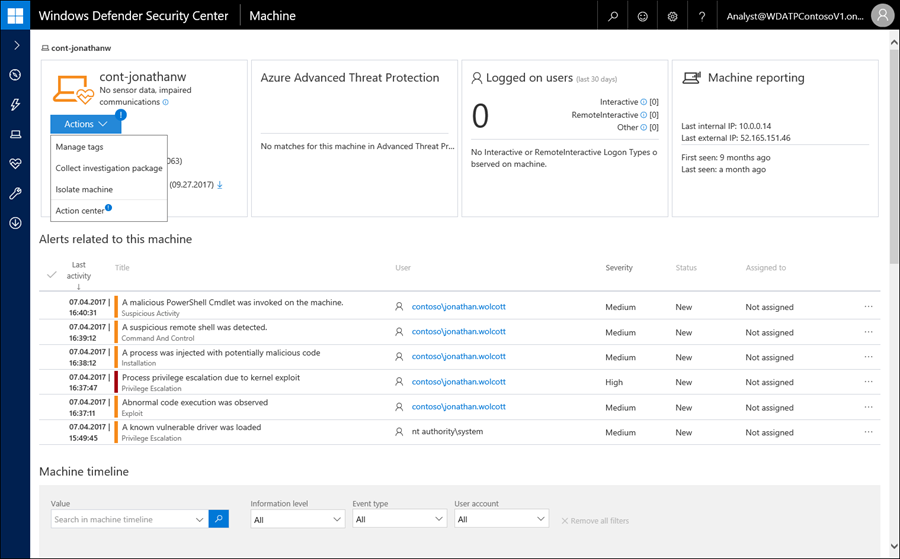Notizie per Categorie
Articoli Recenti
- Explore practical best practices to secure your data with Microsoft Purview 25 Aprile 2025
- New whitepaper outlines the taxonomy of failure modes in AI agents 24 Aprile 2025
- Understanding the threat landscape for Kubernetes and containerized assets 23 Aprile 2025
- [Launched] Generally Available: Instance Mix for Virtual Machine Scale Sets 22 Aprile 2025
- Microsoft’s AI vision shines at MWC 2025 in Barcelona 22 Aprile 2025
- [Launched] Generally Available: Announcing the Next generation Azure Data Box Devices 22 Aprile 2025
- [Launched] Generally Available: Cross-Region Data Transfer Capability in Azure Data Box Devices 21 Aprile 2025
- [Launched] Generally Available: Azure Ultra Disk Storage is now available in Spain Central 21 Aprile 2025
- [Launched] Generally Available: Azure Firewall resource specific log tables get Azure Monitor Basic plan support 21 Aprile 2025
- Hannover Messe 2025: Microsoft puts industrial AI to work 21 Aprile 2025
Microsoft 365 helps businesses increase trust and innovation through compliance with Compliance Manager Preview
Today’s post was written by Ron Markezich, corporate vice president for Microsoft.
The evolution of technology and cloud innovation are democratizing data and in turn fueling digital transformation. Embracing every facet of this digital transformation offers organizations an opportunity to better engage with customers, empower employees, and optimize the creation and delivery of products and services. However, with the increased use of personal data to customize user experiences, new compliance laws—such as the General Data Protection Regulation (GDPR)—are a logical policy component of our technology landscape. Microsoft 365 offers a complete cloud solution to help you with GDPR compliance, while Compliance Manager helps you assess and manage your compliance risk.
Compliance promotes innovation by building customer trust in technology
At its core, the GDPR strengthens personal privacy rights for individuals in the EU and requires organizations to provide individuals control over their personal data. To build and maintain the trust needed to manage customer relationships through technology, organizations need tighter controls over what personal data they hold and how they manage and protect this data. Systems and processes need to be modernized to prevent the unlawful use of data, accommodate personal data requests by individuals, and provide notifications of breaches in a timely manner.
Businesses are looking to the cloud for added value
Our research suggests that companies not only see the long-term value of building trust by protecting customer data, but in fact believe their investments in compliance will positively impact other areas of their business—like productivity and collaboration.* When IT decision makers in Europe and the U.S. were asked to identify their top concern in achieving GDPR compliance, “protecting customer data” was the #1 response while avoiding fines ranked #8. More than half of respondents said the GDPR brings added benefits like collaboration, productivity, and security. Cloud solutions like Microsoft 365 are a big reason that businesses see opportunity in compliance. Of those surveyed, 41 percent said they are likely to move more of their company’s infrastructure to the cloud to become compliant. And among leading cloud vendors, Microsoft was identified as most trusted by a wide margin (28 percent), followed by IBM (16 percent), Google (11 percent), and Amazon (10 percent). All told, 92 percent of IT decision makers in companies that store data primarily in the cloud identified as being confident in their GDPR readiness, compared with just 65 percent of those who prefer to store data on-premises.
Microsoft 365 is a complete cloud solution for GDPR compliance
The Microsoft Cloud is uniquely positioned to help you meet your GDPR compliance obligations, with the largest certified compliance portfolio, services architected to be secure by design, and the most extensive global datacenter footprint in the industry.
Our cloud solution is built for power, scale, and flexibility. Microsoft 365 brings together Office 365, Windows 10, and Enterprise Mobility + Security—offering a rich set of integrated solutions that leverage AI to help you assess and manage your compliance risk, protect your most important data, and streamline your processes.
Assess and manage your compliance risk with Compliance Manager Preview
Because achieving organizational compliance can be very challenging, understanding your compliance risk should be your first priority. Today, we’re making that easier with the preview of Compliance Manager.
Compliance Manager is a cross–Microsoft Cloud services solution designed to help organizations meet complex compliance obligations like the GDPR. It performs a real-time risk assessment that reflects your compliance posture against data protection regulations when using Microsoft Cloud services, along with recommended actions and step-by-step guidance. Learn more about Compliance Manager and how to access the preview.
Protect your most sensitive data
Beyond understanding your compliance risk, protecting both personal data and other sensitive content is key.
Microsoft information protection solutions provide an integrated classification, labeling, and protection experience, enabling more persistent governance and protection of sensitive data wherever it is—across devices, apps, cloud services, and on-premises.
For example, Office 365 Advanced Data Governance leverages machine assisted insights to help you automatically classify, set policies, and protect the data in Office 365 that is most important to your organization.
Azure Information Protection scanner addresses hybrid and on-premises scenarios by allowing you to configure policies to automatically label and protect documents on a Windows Server file share. Read “Azure Information Protection scanner in public preview” to learn more about the scanner.
Microsoft also provides external threat protection solutions to prevent and detect cyber-attacks across workloads—whether on devices using Windows 10, on-premises and Azure-based infrastructure, or with our cloud services like Office 365.
One of these solutions, Windows Defender Advanced Threat Protection, is built into Windows 10 and helps spot most advanced targeted attacks by giving visibility into threats on your device, insights into the scope of the threat, and one-click response capabilities to isolate the threat immediately.
Streamline your processes
The GDPR requires organizations to be able to identify and locate personal data. Having a scalable investigation and audit-ready processes in place to meet requirements is paramount.
Content Search, a feature of Office 365 eDiscovery, makes it easy to search Office 365 for data related to individuals. Since the results of this search could result in large quantities of data or data that is confidential to the organization, machine learning in Advanced eDiscovery can be used to minimize the data so that you are only providing the relevant data in accordance with the GDPR.
Finally, Customer Lockbox provides an audit trail showing when personal data is accessed during service operations.
Get started today on your GDPR journey with Microsoft
No matter where you are in your GDPR efforts, the Microsoft Cloud and our intelligent compliance solutions in Microsoft 365 can help you on your journey to GDPR compliance.
—Ron Markezich
*Online survey conducted by YouGov PLC between 10/31/2017 and 11/8/2017. Sample size: 1,542 IT decision makers.
Source: Office 365 – aggiornamenti



